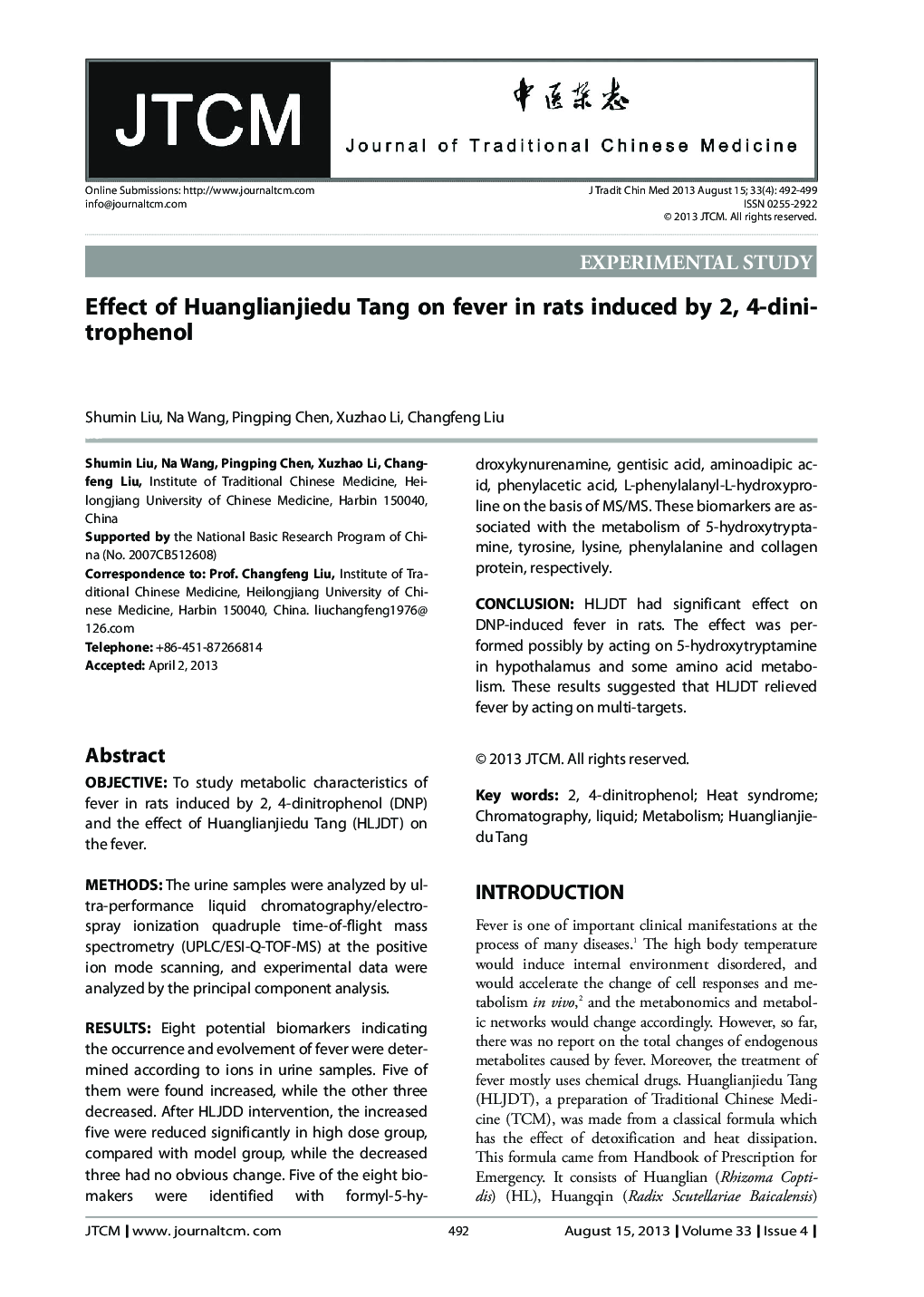| Article ID | Journal | Published Year | Pages | File Type |
|---|---|---|---|---|
| 4201488 | Journal of Traditional Chinese Medicine | 2013 | 8 Pages |
ObjectiveTo study metabolic characteristics of fever in rats induced by 2, 4-dinitrophenol (DNP) and the effect of Huanglianjiedu Tang (HLJDT) on the fever.MethodsThe urine samples were analyzed by ultra-performance liquid chromatography/electrospray ionization quadruple time-of-flight mass spectrometry (UPLC/ESI-Q-TOF-MS) at the positive ion mode scanning, and experimental data were analyzed by the principal component analysis.ResultsEight potential biomarkers indicating the occurrence and evolvement of fever were determined according to ions in urine samples. Five of them were found increased, while the other three decreased. After HLJDD intervention, the increased five were reduced significantly in high dose group, compared with model group, while the decreased three had no obvious change. Five of the eight biomakers were identified with formyl-5-hydroxykynurenamine, gentisic acid, aminoadipic acid, L-phenylalanyl-L-hydroxyproline, phenylacetic acid on the basis of MS/MS. These biomarkers are associated with the metabolism of 5-hydroxytryptamine, tyrosine, lysine, phenylalanine and collagen protein, respectively.ConclusionHLJDT had significant effect on DNP-induced fever in rats. The effect was performed possibly by acting on 5-hydroxytryptamine in hypothalamus and some amino acid metabolism. These results suggested that HLJDT relieved fever by acting on multi-targets.
